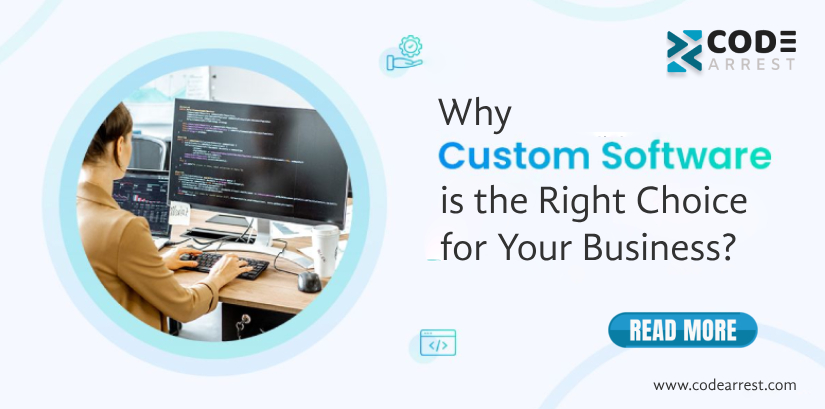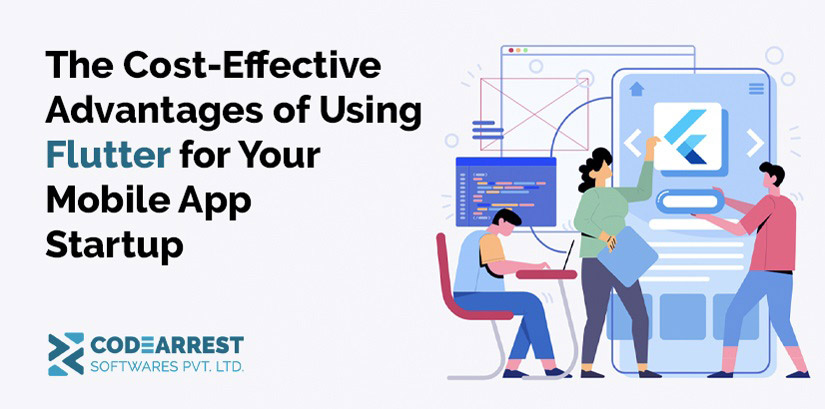Blogs Introduction In an era where digital solutions reign supreme, Software as a Service (SaaS) has emerged as a transformative force, offering businesses of all sizes the ability to access powerful applications conveniently over the internet. With the advent of cloud computing, the barriers to building and deploying SaaS applications have significantly diminished, making it an attractive option for entrepreneurs and enterprises alike. In this extensive guide, we will delve into the intricacies of building a cloud-based SaaS application in six actionable steps, from conceptualization to deployment, and how partnering with CodeArrest can streamline this process for your business. Step 1: Define Your Objectives and Understand Your Audience Embarking on the journey to build a SaaS application requires a clear understanding of your objectives and the needs of your target audience. Begin by identifying the problem your SaaS application aims to solve and conducting thorough market research to gain insights into your potential users’ pain points, preferences, and behavior patterns. By understanding your audience, you can tailor your SaaS solution to meet their specific needs, ensuring its relevance and appeal in the marketplace. Conduct Market Research: Dive deep into your target market to identify existing pain points and gaps in the market that your SaaS application can address. Define Objectives: Clearly outline the goals and objectives you aim to achieve with your SaaS application, whether it’s improving efficiency, reducing costs, or enhancing user experience. Identify Target Audience: Create user personas based on your research to understand the demographics, preferences, and behaviors of your target audience. Step 2: Design a Scalable Architecture for Your SaaS Application The architecture of your SaaS application forms the backbone of its functionality, scalability, and performance. Designing a scalable architecture that can accommodate growth and handle increasing user loads is essential for long-term success. Consider factors such as multi-tenancy, data storage, security, and integrations when architecting your SaaS application. Leverage cloud services such as Amazon Web Services (AWS), Microsoft Azure, or Google Cloud Platform (GCP) to build and deploy your SaaS application in a scalable and cost-effective manner. Choose the Right Cloud Platform: Evaluate different cloud providers based on factors such as reliability, scalability, security, and cost-effectiveness. Design for Scalability: Plan for future growth by designing a scalable architecture that can handle increasing user loads and accommodate additional features and functionalities. Implement Multi-Tenancy: Utilize multi-tenancy architecture to support multiple customers on a single instance of the application while maintaining data isolation and security. Step 3: Develop the Minimum Viable Product (MVP) In the early stages of development, focus on building a Minimum Viable Product (MVP) that includes the core features and functionalities of your SaaS application. The MVP serves as a prototype that allows you to validate your concept, gather feedback from users, and iterate based on their responses. Prioritize features based on user needs and market demand, ensuring that your MVP delivers value to your target audience while minimizing development costs and time-to-market. Prioritize Features: Identify the essential features that address the core needs of your target audience and focus on implementing them in the MVP. Iterate Based on Feedback: Gather feedback from early users and iterate on your MVP based on their suggestions and pain points to improve user experience and functionality. Keep It Simple: Resist the temptation to include every possible feature in the MVP and focus on delivering a streamlined and user-friendly experience that solves the primary problem. Step 4: Implement Robust Security Measures Security is paramount when building a cloud-based SaaS application, particularly when handling sensitive user data. Implementing robust security measures helps protect your application against common threats such as data breaches, unauthorized access, and DDoS attacks. Incorporate encryption protocols, access controls, and secure authentication mechanisms to safeguard user data and ensure compliance with data protection regulations such as GDPR and CCPA. Encrypt Data: Utilize encryption protocols to protect sensitive user data both in transit and at rest, ensuring that it remains secure from unauthorized access. Implement Access Controls: Implement granular access controls to restrict access to sensitive features and data based on user roles and permissions. Regular Security Audits: Conduct regular security audits and penetration testing to identify vulnerabilities and address them before they can be exploited by malicious actors. Step 5: Test, Iterate, and Optimize Thorough testing is essential to ensure the reliability, performance, and usability of your SaaS application. Conduct comprehensive testing at each stage of development, including unit testing, integration testing, and user acceptance testing. Gather feedback from beta testers and early adopters to identify areas for improvement and iterate on your product accordingly. Continuously monitor and optimize the performance of your SaaS application to deliver a seamless user experience and maintain user satisfaction. Conduct Comprehensive Testing: Test your SaaS application rigorously to identify and fix bugs, ensure compatibility across different devices and browsers, and validate functionality against user requirements. Gather User Feedback: Solicit feedback from beta testers and early adopters to identify pain points, usability issues, and feature requests, and use this feedback to prioritize improvements and new features. Monitor Performance: Implement monitoring and analytics tools to track key performance metrics such as uptime, response time, and user engagement, and use this data to identify opportunities for optimization and improvement. Step 6: Deploy and Scale Your SaaS Application Once your SaaS application is ready, it’s time to deploy it to the cloud and make it available to users. Choose a reliable cloud hosting provider and deploy your application using scalable infrastructure that can accommodate growth and fluctuations in user demand. Implement monitoring and alerting systems to track performance metrics and detect issues in real-time. As your user base grows, scale your infrastructure horizontally or vertically to maintain optimal performance and availability, ensuring a seamless user experience. Choose a Reliable Cloud Provider: Select a cloud hosting provider that offers reliability, scalability, security, and cost-effectiveness, and deploy your SaaS application using their infrastructure and services. Implement Continuous Deployment: Streamline the deployment process by implementing continuous integration and continuous deployment (CI/CD)









